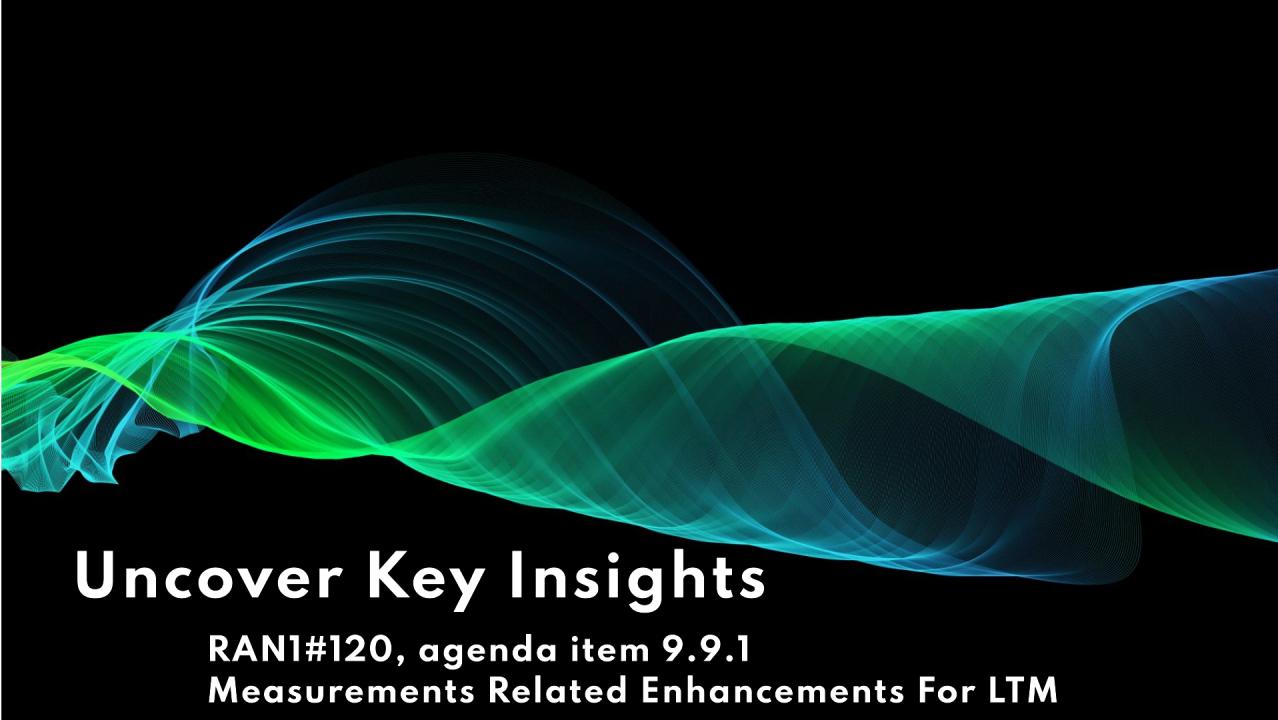The Growing Complexity of 3GPP Proposal Reviews
The volume of technical discussions and proposals at each 3GPP RAN1 meeting continues to grow. As RAN1#120 approaches, agenda item 9.9.1 (Measurements Related Enhancements for LTM) remains one of the most debated areas, with 301 proposals submitted by 28 sources. The sheer workload demands a structured approach—one that enables delegates to focus on the most impactful discussions while navigating industry priorities efficiently.
Tracking the Developments: Agenda Item 9.9.1
Agenda item 9.9.1, Measurements Related Enhancements for LTM, has seen significant contributions at RAN1#118, RAN1#118-bis, and RAN1#119, paving the way for the upcoming RAN1#120 meeting.
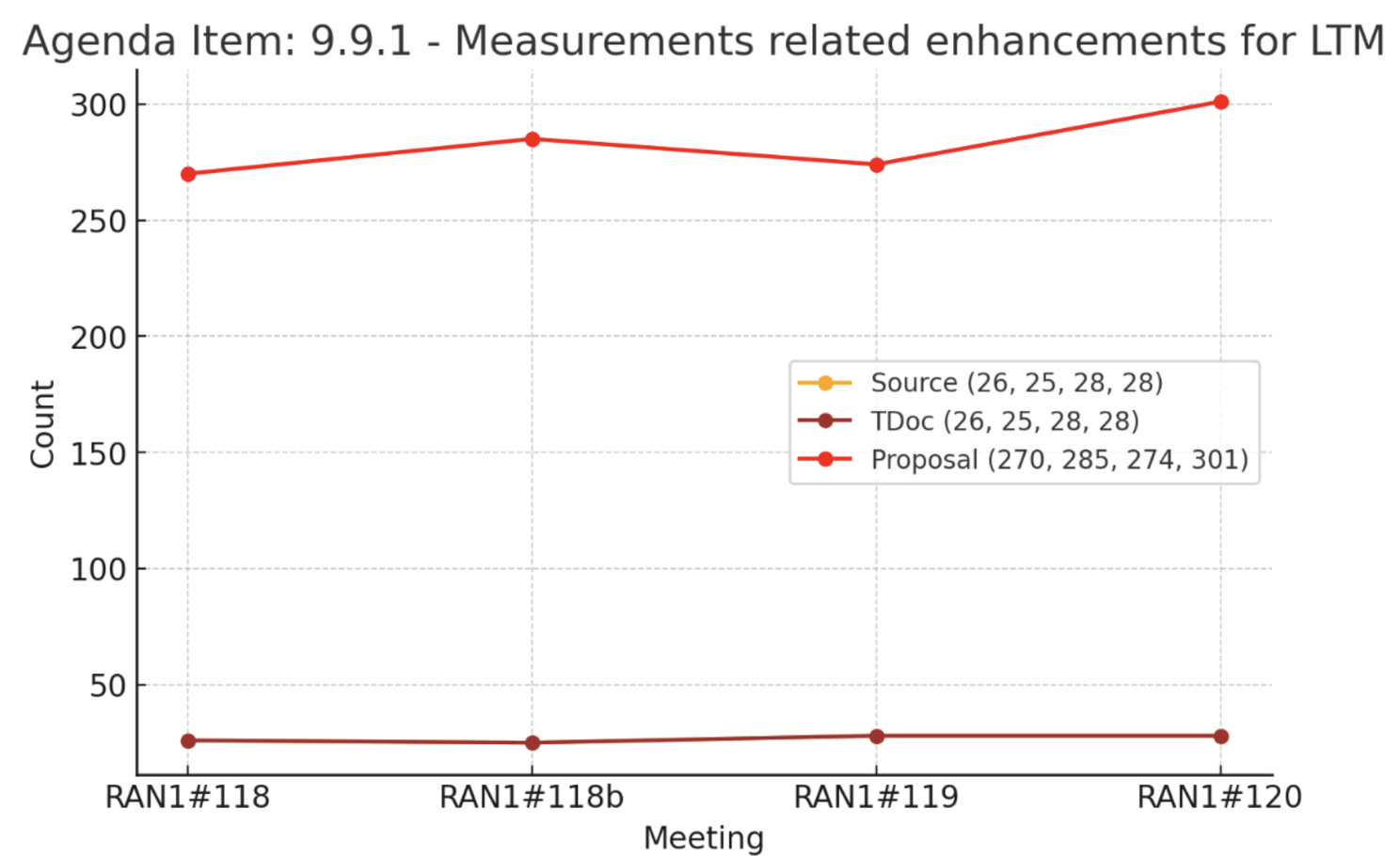
Background: Key Agreements from RAN1#119 (R1-2410186)
Progress in LTM measurement enhancements has been incremental, with RAN1#119 reaching key agreements that set the stage for continued discussions at RAN1#120. These include:
- Serving Cell RS: Use QCL RS of TCI-state if CSI-RS has repetition; otherwise, use SSB QCLed with QCL RS.
- Invalid UE Config: Serving cell CSI-RS not in repetition set + used for candidate measurement.
- Beam Management: CSI-RS with QCL-TypeD supported for LTM TCI state if TRS is QCL-TypeA.
These agreements provide a structured foundation for further refinements in event evaluation criteria, measurement resource configurations, and beam management at RAN1#120.
What’s Coming at RAN1#120?
At RAN1#120, the discussions will be shaped by the 301 proposals submitted by 28 sources. With evolving priorities, key topics from R1-2500419, such as the time-domain properties of CSI-RS transmission and candidate cell reporting, are expected to take center stage.
Understanding the Technical Landscape of RAN1#120
Based on an in-depth analysis of mapped proposal data, RAN1#120 discussions are structured into 7 key technical topics with 16 subcategories, shaping the agenda item 9.9.1 discussions.
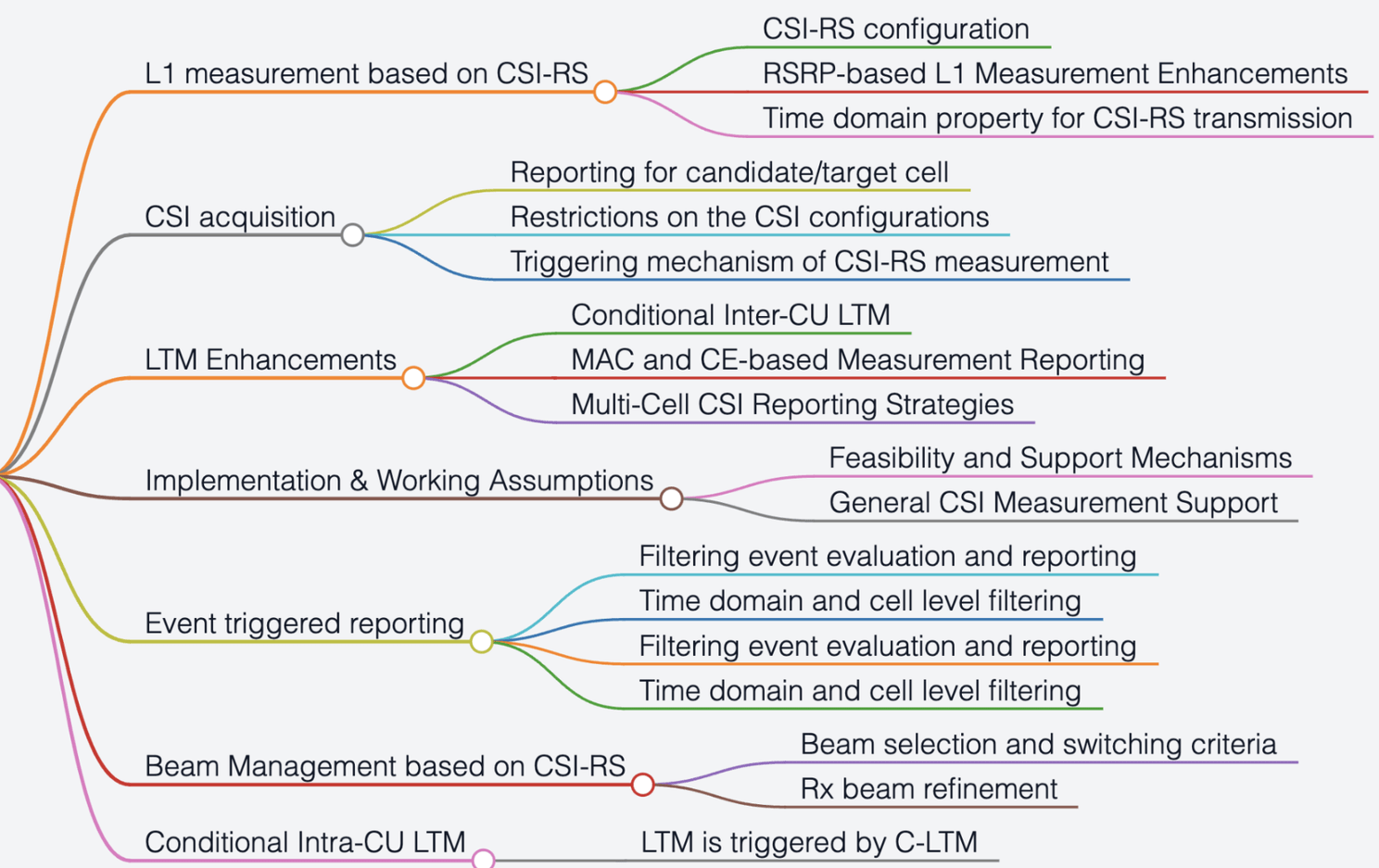
1. L1 Measurement Based on CSI-RS (90 Proposals)
Discussions focus on refining measurement accuracy and consistency, optimizing CSI-RS configurations, and clarifying CSI-RS detection timing relative to QCL SSB to enhance overall performance.
2. CSI Acquisition (62 Proposals)
This category explores mechanisms for triggering CSI-RS measurements, improving reporting accuracy for candidate/target cells, and refining time-domain properties of CSI reporting to ensure reliable measurements in mobility scenarios.
3. Event-Triggered Reporting (29 Proposals)
Focuses on event evaluation, filtering, and time-domain techniques to enhance measurement responsiveness while reducing unnecessary reporting overhead.
By categorizing these proposals, we enable a more structured approach to proposal review, reducing redundant evaluations and allowing delegates to focus on impactful contributions.

Technical topics with High Priority
According to R1-2500419, high-priority topics for RAN1#120 include Time domain properties for CSI-RS transmission and Reporting for candidate/target cells. By leveraging AI, we mapped each proposal to its respective technical topic while aligning it with FL priorities. This enables feature leads and delegates to streamline their review process, focusing on priority areas rather than manually reviewing each TDoc.

Key Proposal Contributors:
- vivo leads with 23 proposals, followed by Nokia and Ericsson (21 each).
- Other contributors average 9.4 proposals each, shaping the ongoing discussions.

These numbers reflect the influence of significant contributors and their role in shaping standards.
Focus by US Contributors
- Qualcomm’s 11 proposals span L1 measurement based on CSI-RS and Event triggered reporting, showcasing a diverse focus.
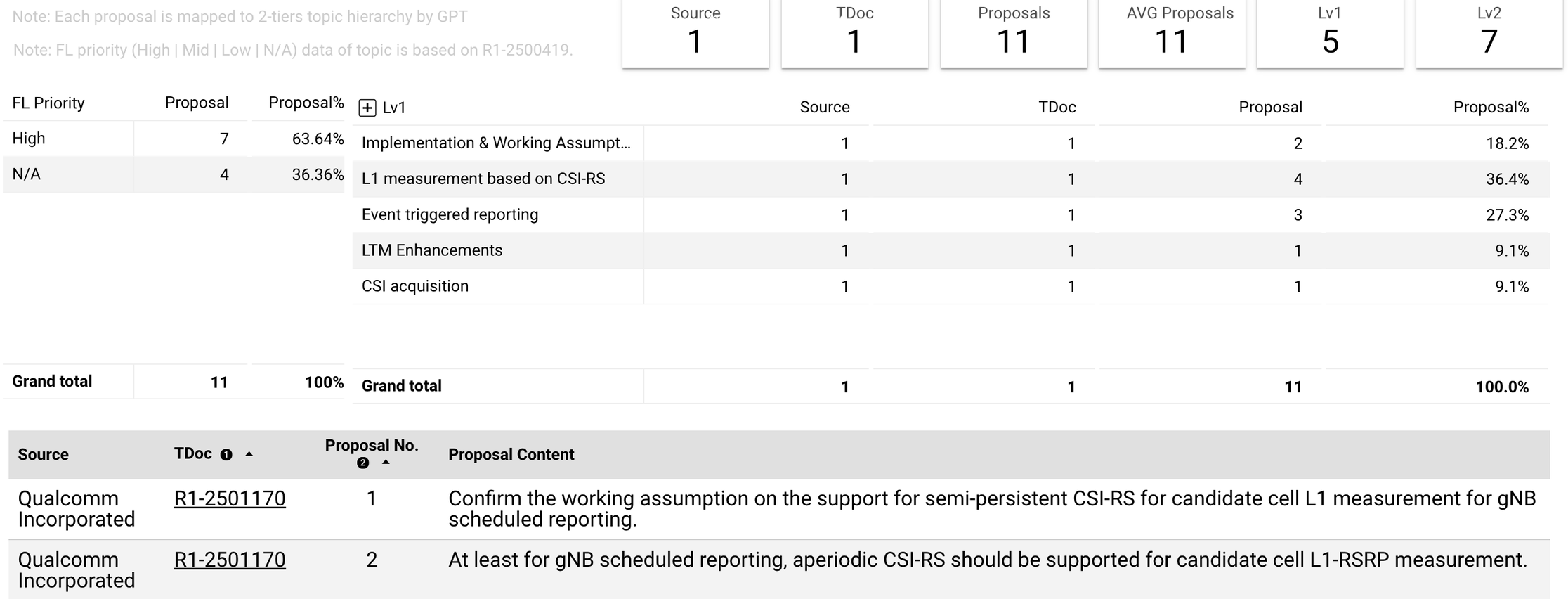
- InterDigital has 10 proposals focusing on Implementation & Working Assumptions and CSI acquisition, reflecting its approach to standardization.
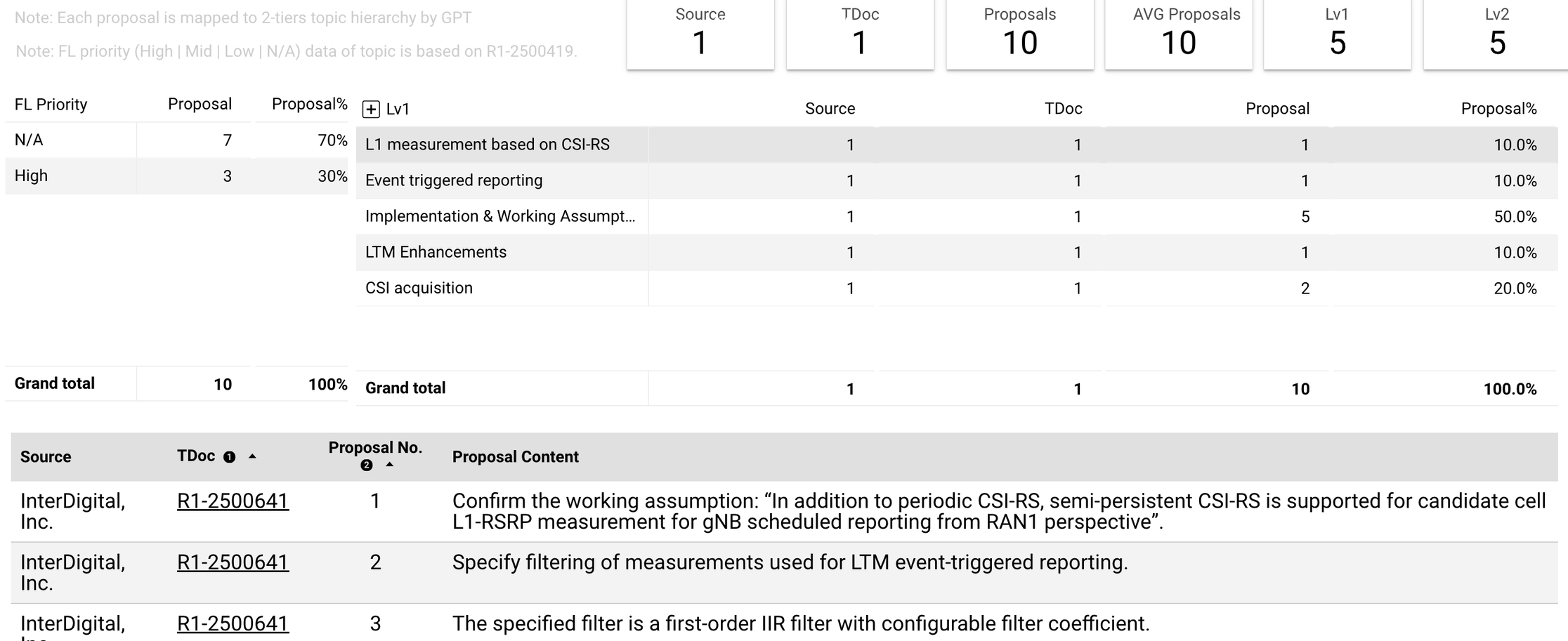
This mix of specialization and diversity reflects different approaches to the standardization process.
Dissenting Perspectives
Ericsson’s 3 proposals in R1-2500992 challenge two high-priority topics, adding critical perspectives to the dialogue. These dissenting views provide valuable counterpoints, helping refine final technical agreements.
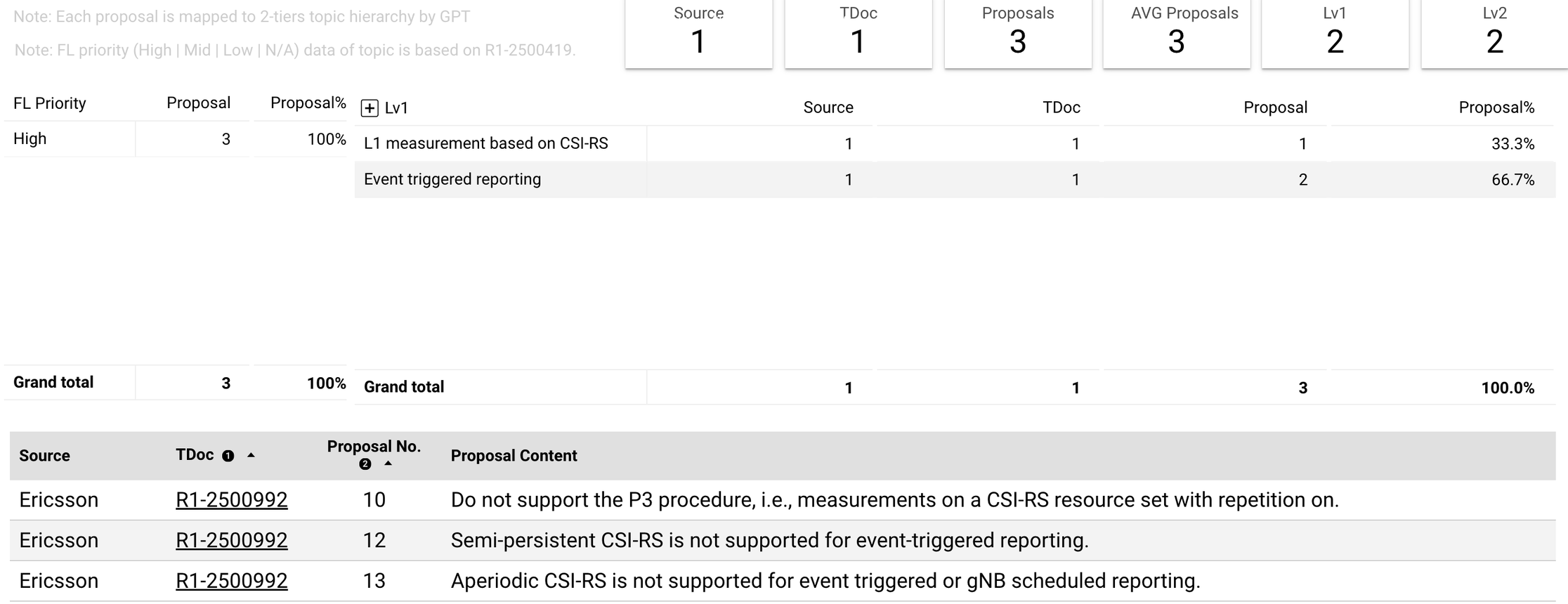
The Workload Challenge & Proposal Zone
With 301 proposals submitted, RAN1 delegates must efficiently navigate vast technical discussions. Reviewing each proposal manually is traditional but time-consuming, making AI-powered insights critical.
Proposal Zone: AI-Powered Efficiency
Proposal Zone, part of the Standard Impact Extractor (SIE), simplifies proposal analysis by:
- Filtering proposals by agenda item for faster review.
- Providing summaries and sentiment insights to enhance decision-making.
- Highlighting allies and competitors, offering strategic positioning for discussions.
Screenshot of Proposal Zone with filter for agenda item 9.9.1 of RAN1#120
Proposal Zone can significantly reduce the manual effort required for evaluation, allowing you to focus on strategic discussions. Visit https://ixi.wispro.com to learn more.
Let’s Shape the Future Standards Together!
As RAN1#120 approaches, having the right insights and tools is critical to shaping future standards for LTM enhancements. If you’re interested in trying our upcoming interactive dashboards or have ideas for new features to help 3GPP delegates and feature leads, let’s connect—comment below or message me directly.
The original article is from https://www.linkedin.com/pulse/breaking-down-ran1120-how-delegates-can-efficiently-tackle-lin--7v1sc/.
For earlier agreements, check out the previous article:
- “LTM Measurement Enhancements: Progress & Insights Leading into RAN1#119” (published Nov. 12, 2024).
- “Understanding the Focus of Measurements Related Enhancements for LTM at RAN1#118-bis for 3GPP RAN1 Delegates” (published Oct. 9, 2024).
